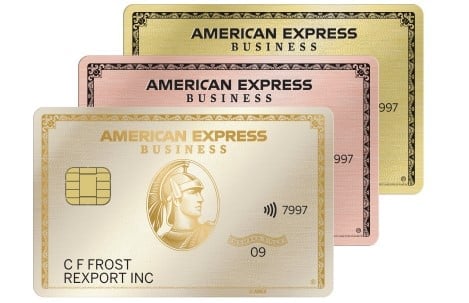Nonprofit Business Loans: Top Funding Options for Charities
Loans for nonprofit business are available, but you may also want to consider alternatives like grants and corporate giving programs for funding.

Many, or all, of the products featured on this page are from our advertising partners who compensate us when you take certain actions on our website or click to take an action on their website. However, this does not influence our evaluations. Our opinions are our own. Here is a list of our partners and here's how we make money.
Concerned about tariffs?
Many small-business owners are under increased economic stress and uncertainty following the latest tariff announcements. NerdWallet is here to help you find answers for whatever you're looking for. Here are some resources to help you get started:
Need emergency funding? Consider a business line of credit.
Looking for fast access to working capital? Discover the best working capital loans.
Want tips on how to mitigate the impact of tariffs? Read our guide.
Nonprofit businesses often find it challenging to get approved for business loans. Similar to other companies, funding may be needed for payroll, marketing and major purchases such as equipment and real estate. However, because nonprofits focus on a mission and not on generating a profit, lenders typically consider nonprofit organizations to be at a higher risk of not repaying loans than for-profit businesses.
However, business loans are available to nonprofit businesses and can be found at a variety of financial institutions. Also, many alternative funding options exist when a nonprofit can’t get approved for a loan.
How much do you need?
We’ll start with a brief questionnaire to better understand the unique needs of your business.
Once we uncover your personalized matches, our team will consult you on the process moving forward.
Loan options for nonprofits and charities
Here are options to consider when looking for a business loan for a nonprofit.
Banks and credit unions
Banks and credit unions offer “traditional” business funding, such as business term loans, business lines of credit, real estate loans and equipment financing. However, bank loans are challenging to secure for nonprofits. In general, borrowers must present a strong financial profile.
If your nonprofit has a good credit history and is generating revenue, a bank loan may be an option. For example, U.S. Bank offers loans and lines of credit for nonprofits to manage cash flow, buy equipment, cover operating expenses and more. Valley National Bancorp, a regional bank that operates in Alabama, California, Florida, Illinois, New Jersey and New York, also has nonprofit loans and lines of credit.
In addition, local banks and credit unions can be a source of loans for nonprofits. The Community Bank of the Bay located in the San Francisco Bay area, for example, has term loans and lines of credit designed for nonprofits. The Verity Credit Union, in Seattle, has business loans for nonprofits.
You'll need to provide documentation such as financial statements, revenue documents and articles of incorporation when applying. The lender will typically give you a list of what is needed. Also, depending on how the lender evaluates your risk, you may be offered a higher interest rate than a for-profit business.
» MORE: Best credit union business loans
SBA loans and grants
Guaranteed by the U.S. Small Business Administration, SBA loans are offered by traditional lenders such as banks and credit unions. These loans, with their low interest rates and long repayment terms, can be a good alternative when a business can’t qualify for a standard bank loan. Although most SBA loan programs require a business to operate for profit, SBA microloans are available to certain not-for-profit child care centers and private nonprofit organizations can also apply for SBA disaster loans.
The SBA also issues grants to nonprofits dedicated to helping disadvantaged microentrepreneurs through the Program for Investors in Microentrepreneurs (PRIME) program. Keep in mind that looking into SBA loans and grants can take some time and won’t be the fastest funding option.
You can also use grants.gov, an online database that helps nonprofits connect with government grant opportunities.
Community development financial institutions
Community development financial institutions, or CDFIs, are lenders that specialize in offering financial assistance to disadvantaged communities and can be a source of funding for nonprofit businesses. Loan amounts may be smaller and interest rates higher than those offered by traditional banks. Still, if you’re having trouble finding a loan for your nonprofit, researching CDFIs could be an option.
CDFIs are often nonprofits themselves, or some might be financial institutions, including banks or credit unions. CDFIs can operate within local or state jurisdictions or throughout the U.S. For example, People Fund offers loans to small businesses and nonprofits in Texas. Propel Nonprofits operates in Iowa, Minnesota, North Dakota, South Dakota and Wisconsin. And the Nonprofit Finance Fund provides loans to nonprofits and social enterprises across the U.S.
The CDFI locator tool — offered by the Opportunity Finance Network, a national network of CDFIs — can be used to find lenders in your area.
Why are nonprofit business loans hard to obtain?
A nonprofit business or charity presents unique challenges for lenders when reviewing the organizations for a business loan.
Eligibility requirements
Most lenders set minimum requirements for business loans including credit score, time in business and annual revenue. They generally like to see borrowers that generate a profit and have strong revenue and consistent cash flow.
However, nonprofits operate differently than their for-profit counterparts. A nonprofit organization may have inconsistent revenue and cash flow and invest all their revenue in the mission of the organization. Some may even be operating at a loss.
Risky investment
Without profits and consistent revenue, nonprofits are seen by lenders as more likely to default on their loans and therefore are a risky investment. That’s especially the case with nonprofit organizations that are operating at a loss. In contrast, for-profit businesses that are operating at a profit pose a lower risk of default in the eyes of lenders.
This doesn’t mean that you can’t get funding, but it can mean higher interest rates on any loans for your nonprofit organization.
Collateral
When working with a nonprofit or charity, the lender may request collateral to secure the business loan. Collateral is an asset such as equipment or real estate that can be seized by the lender to recoup its money if you default on the loan. It’s important to consider this option thoroughly since the seizure of collateral could put your nonprofit at risk.
Additional funding options for nonprofits
If you can’t secure a loan for your nonprofit, here are some alternatives to consider for funding:
Nonprofit grants
Nonprofit grants can be a source of free funding. Unlike loans, you don’t need to pay back these funds. Some nonprofits and charities run almost exclusively on donations and grants.
Because applying for grants is a time-consuming process, you may want to create a tiered application system for the grants of interest. For example, select grants with missions that best align with your nonprofit goals and complete applications for them first. If time permits, you can move onto a second tier of grants where you think winning may be more of a challenge, but still possible.
There is an array of nonprofit grants including government, corporate and nonprofit. For example, grants are offered through financial institutions such as the Bank of America Charitable Foundation and Wells Fargo Community Giving as well as nonprofit grant agencies such as the 3M Foundation.
Corporate giving programs
Nonprofits can appeal to local small businesses and corporations who want to give back to their community. Corporate giving programs will typically generate less funding than a loan or grant, but can still be helpful.
Contributions in corporate giving programs can vary as:
Cash donations.
Physical gifts such as products, services, event tickets, etc.
Sponsorships for fundraising events.
Volunteer work.
You can visit the websites of local businesses and large corporations to see if they have charity or nonprofit organizations. Or calling local businesses to pitch your nonprofit cause to their marketing or PR team is another option.
Business credit card
A business credit card can be an option when you can’t get a loan. It can be used in a similar way to a business line of credit — funding purchases to be paid back, partially or fully, at a later time.
The best credit cards for nonprofit organizations are often the same as for other small businesses. In addition to interest rates and annual fees, consider available perks such as cash back, earned rewards, discounts and sign-up bonuses when reviewing credit card options.
Crowdfunding sites
Crowdfunding can be a fast way for nonprofits to raise capital. Instead of securing a large lump sum from a loan or grant, crowdfunding focuses on collecting small donations from a large number of people. You will need to devote time and resources to develop your marketing campaign for the site. Kickstarter, Indiegogo and GoFundMe are a few of the popular crowdfunding sites and can be used by nonprofits to raise money.
Before setting up your campaign, however, review the organization’s guidelines to identify any restrictions that may apply to your nonprofit. For example, Kickstarter allows nonprofits and charitable organizations to raise funds for specific projects but not for general support of their cause. GoFundMe and Indiegogo, on the other hand, don’t appear to have such limitations.
Next steps to fund your nonprofit:
If you can’t qualify for a bank or SBA loan: In addition to CDFIs, some online lenders lend to nonprofits or have partner resources to help nonprofit businesses, and may be more lenient when it comes to credit requirements.
If you have poor credit and lack collateral: Small-business grants can be difficult to find and win, but they can help your nonprofit avoid taking on debt.
If you want to avoid taking on debt: Consider crowdfunding platforms that may be open to funding nonprofits and can help you avoid going into harmful business debt.
A version of this article originally appeared on Fundera, a subsidiary of NerdWallet.





